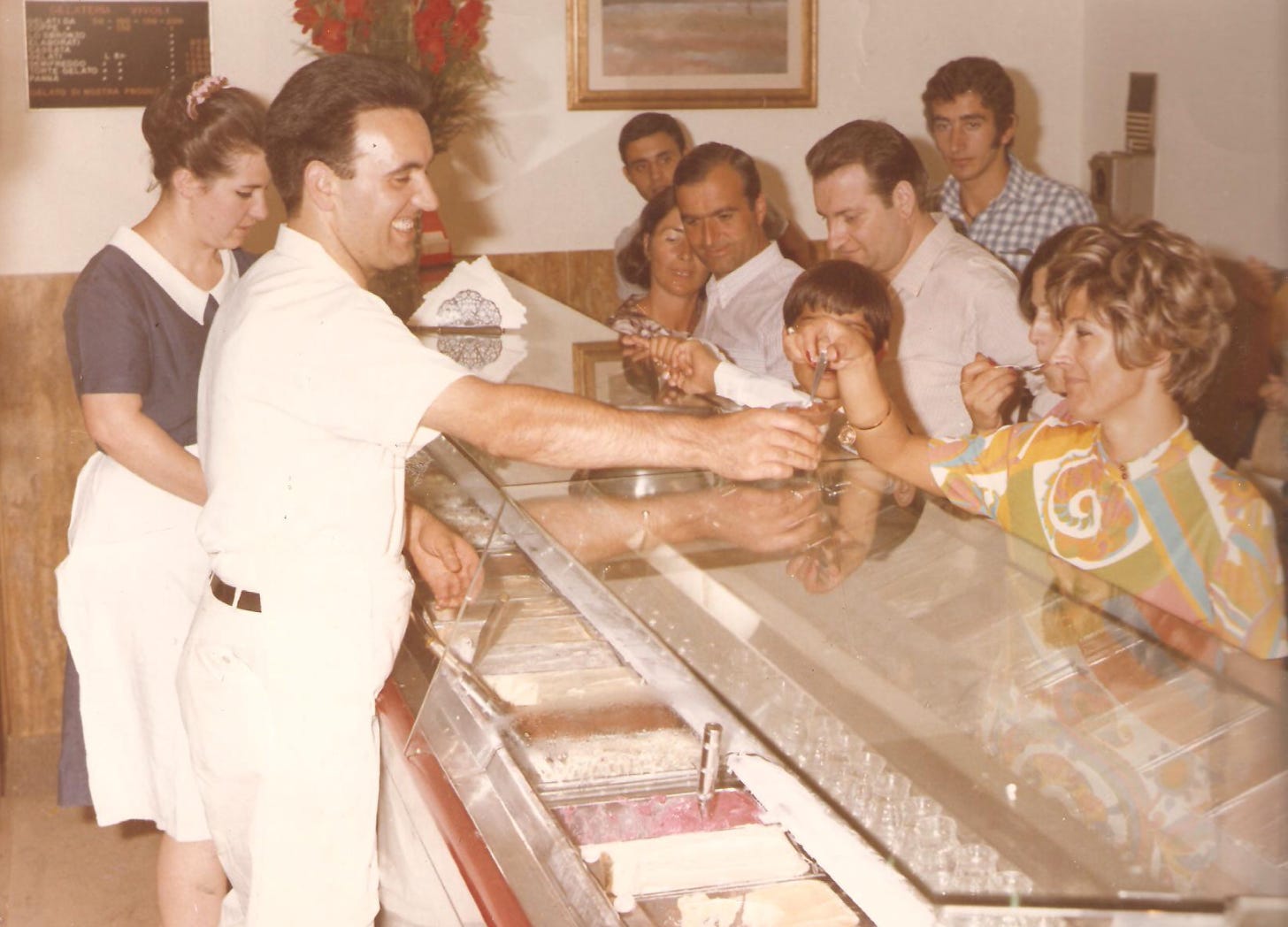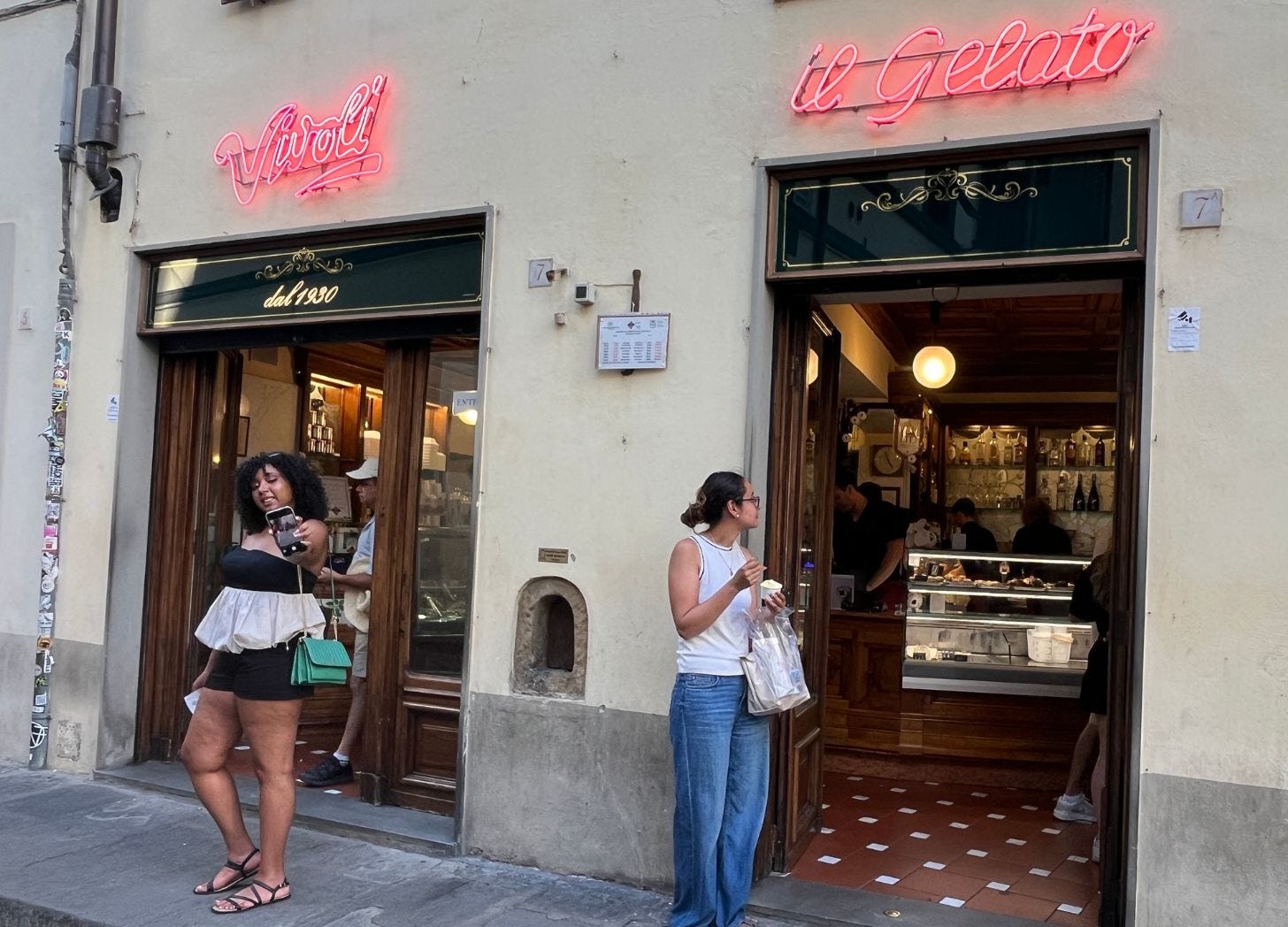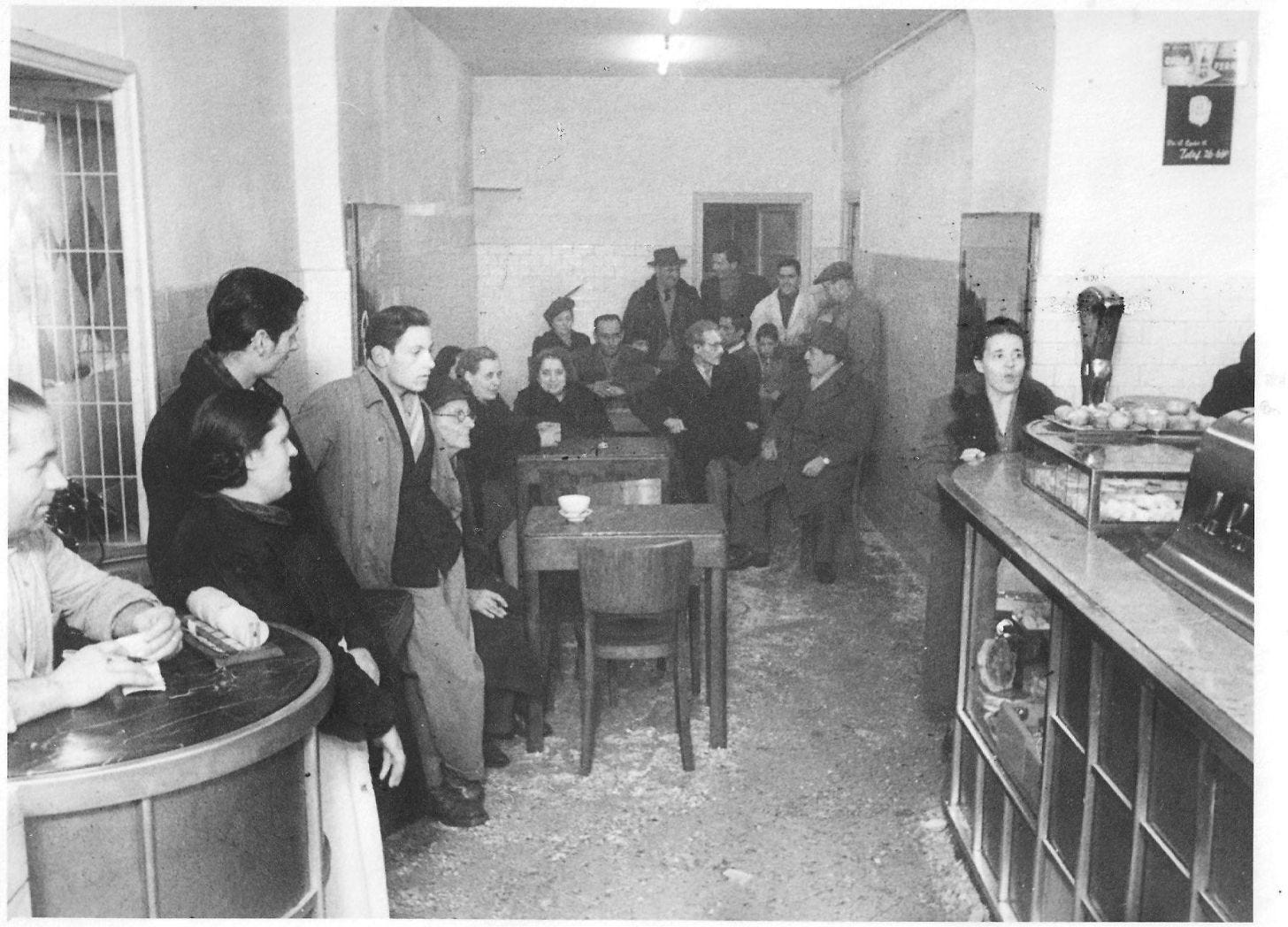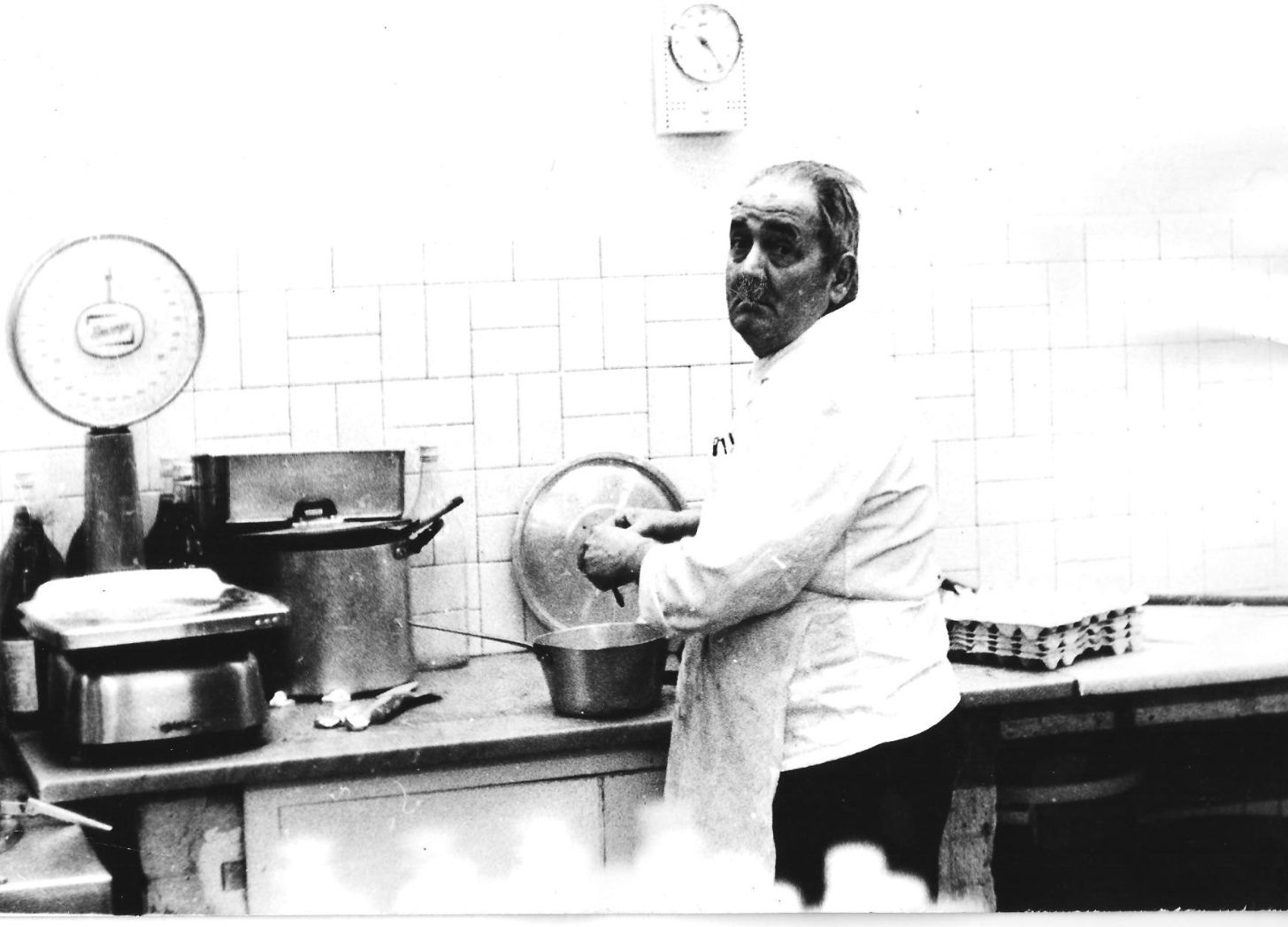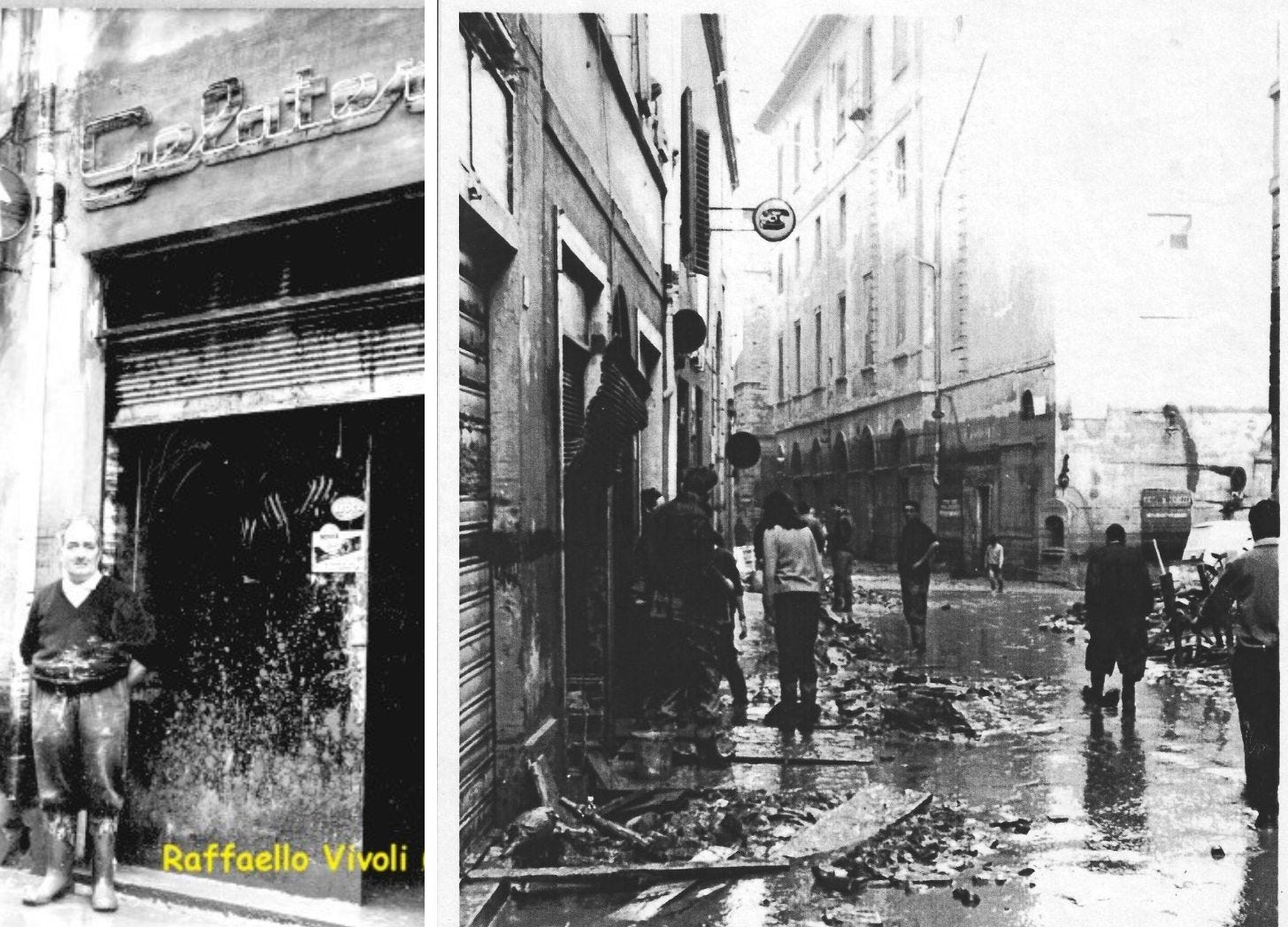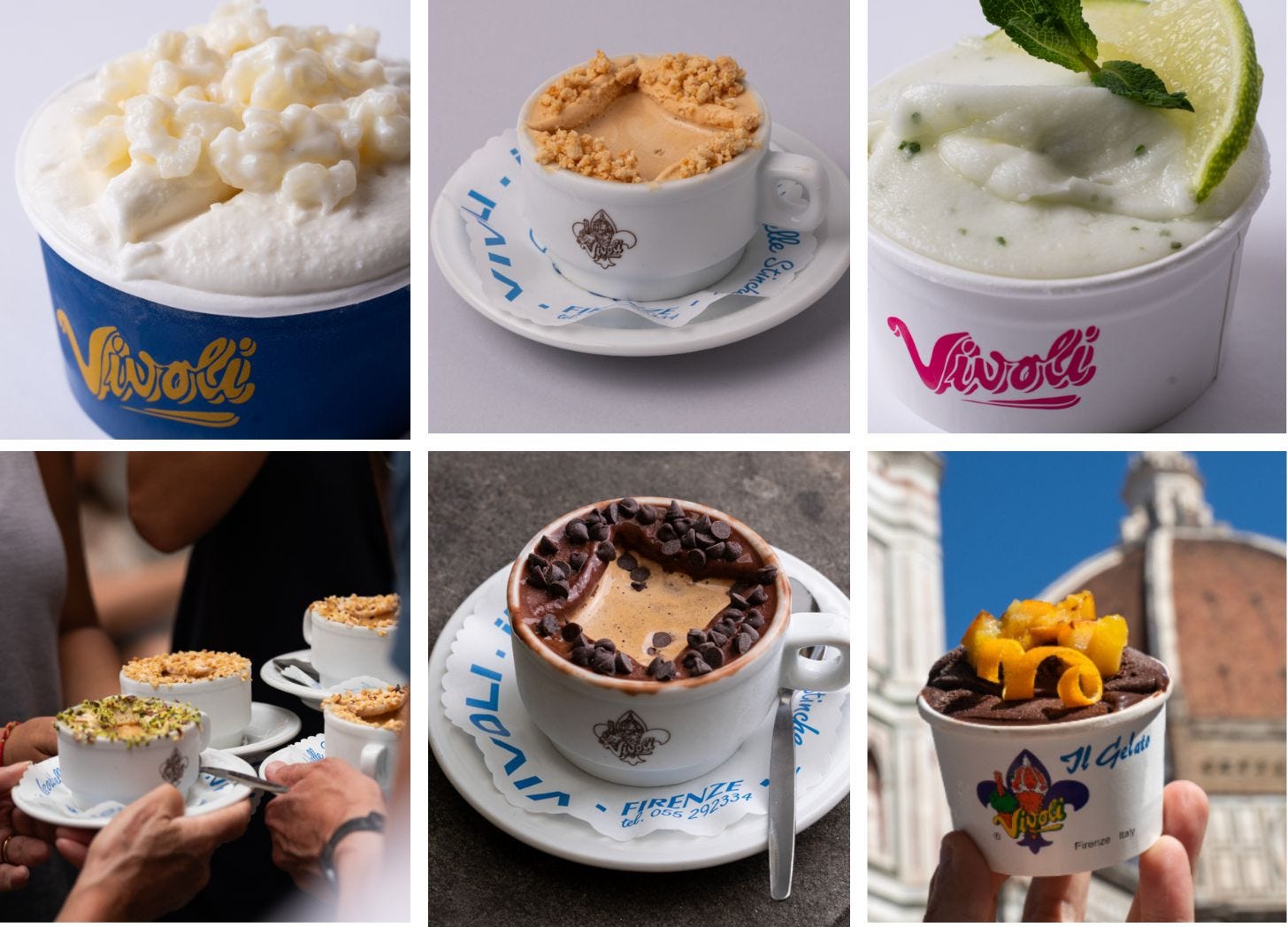The Inside Scoop on Gelateria Vivoli
Between the history and the hype, Vivoli is the quintessential Florentine gem hidden in plain sight. I learned more from three generations of Vivoli ladies.
Vivoli is viral, for good reason.
If you ask the Internet and the influencers for Florence’s best gelato, Vivoli tops the list.
The only other gelateria recommended with such ferver, was La Sorbettiera. Stay tuned for a taste of them next month! My mouth is still watering.
I’ve been to Florence a lot this year. Every time I pass Vivoli—no matter the hour—the line snakes up and down their original location on Via Isola delle Stinche.
Triumphant travelers perch on the curbs of nearby corners in a happy race against the sun to spoon ice cream and coffee-drenched affogato from little cups to their sticky, smiling mouths.
I asked Florentines and longtime locals the same gelato question, and they confirmed it, right down to restaurant royalty, Chiara Masiero. The owner of beloved Cammillo Trattoria, one of the city’s most impossible tables, didn’t flinch.
She’s been a client of Vivoli per years and serves their crema alongside her legendary apple torte. “It’s still made with full cream and eggs, they kept the original recipe,” she tells me.
Next best flavors? Vin santo and Crema with orange zest. The orange cream flavor was recommended multiple times. I can site sources.
I had the pleasure of wrapping up an unforgettable lunch at Cammillo with a taste of Vivoli. Chiara insisted. Resistance was futile.
As a last meal on earth, Cammillo is a contender. I’ll publish my story on Chiara and Cammillo in the fall.
Four Generations of Gelato
In 1929, Serafino Vivoli purchased a latteria on Via Dell'Isola delle Stinche, 7 r.
In an epic chain of communicative command, I reached out to his great-granddaughter, Giulia, whose mother Patrizia, and grandmother, Simonetta, joined forces to share stories and pictures.
Fun and potentially confusing Florentine fact: street numbers come with the initials r (for rosso: red) and n (for nero: black). After the unification of Italy, Florence maintained a thriving commercial identity. To designate businesses addresses from private residences, they were labeled in red.
According to Patrizia, “It’s a small street that doesn’t get a lot of foot traffic and many Florentines don’t even know it exists, and yet is packed with history.”
The street is named for Le Stinche, a 1300s-era prison built to hold the captives of Castello Le Stinche, following a Florentine conquest. It was later used for political prisoners and as debtors’ jail and housed none other than Niccolò Machiavelli, after he was caught up in a Medici paranoid conspiracy theory.
The prison was referred to as an isola (an island) for its windowless high walls and a moat-like canal. It’s only entrance was known as La Porta della Misera: the gate to misery.
In its place, now stands a much happier packed house, Teatro Verdi.
From Whipped Cream to Ice Cream
A latteria, as the name suggests, was a place to purchase dairy products, especially milk and cream. Soon after Serafino took the reins, the latteria became a Sunday gathering place for an espresso and a package of fresh whipped cream.
A year later, Serafino’s brother Raffaello convinced him to focus on ice cream. They bought a machine and built a counter, but there were no freezers back then, and ice was a hot commodity (so to speak).
It was harvested and delivered from a mountain town called Saltino on the Tuscany’s eastern border with Emilia. In Saltino, temperatures dipped so severely, the residents made an industry out of it.
They carved vats underground or out of stone, to collect and conserve snow. The ghiacciaie (ice houses) were insulated with straw, and kept naturally formed ice cool all year.
Blocks of ice were delivered by night to merchants to keep food fresh, or in the case of Vivoli, to create frozen delights.
A Surge in the ‘60s and ‘70s
By 1960, Vivoli had established itself as the city’s gelateria. Raffaello’s son Piero took over the business, and soon enough, Vivoli made it into international guidebooks as an absolutely must-see destination, “practically like a monument,” says Patrizia.
Another surge, the great flood of 1966, threatened to slow their momentum. When the Arno River burst its banks, Florence was devastated by waist-high waters, mud, and toxic sludge.
While teams of international volunteers, known as angeli del fango (mud angels) swooped in save Florence’s cultural treasures, the Vivoli family donned rubber boots and gloves and cleaned up their shop in a matter of weeks.
A Family Affair
Piero and his wife Simonetta, and their daughters, Patrizia and Silvana kept the business alive by maintaining the quality of ingredients and the original recipes.
Consistency paid off. Patrizia recalls customers coming back years later to tell her, “I studied abroad here, and I wanted to bring my family so they could taste your ice cream. It’s just like I remember.”
Vivoli has been a landmark ever since. Customers who arrive at closing have used all kinds of excuses, desperate for a fix. Among them:
My wife is pregnant
It’s my last day here.
Please, I’m going to miss my train!
Today, a fourth generation of Vivolis, Giulia and Lorenzo, head the business. They’ve brought experiences from abroad, and infused creative energy into the institution. Flavors like orange-chocolate and their latest, creamy rice gelato are as innovative as they are sumptuous.
To celebrate the 95th anniversary of the gelateria in May of 2025, they launched a space next door dedicated to affogato. They took a classic dessert—a scoop of ice cream affogato (drowned) in espresso to a new level.
Vivoli’s Affogato Bar will drench your gelato flavors in coffee, liqueurs, and gourmet toppings like chopped pistachios and hazelnuts or chocolate.
When it comes to lines, Vivoli is worth the wait. Bring a good friend or a good book and of course, your appetite. One is never enough.
Vivoli + Affogato Bar
Via Isola delle Stinche, 7r (red)
TEL +39 055 292334
SITE | @vivoli_il_gelato
Tue-Sat: 8:00am-9pm / Sun: 9am-8pm



